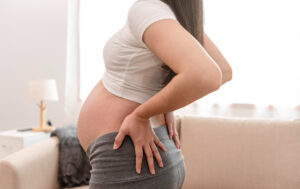Pregnancy can be one of the most exciting times in one’s life, yet it also brings with it many unpleasant side effects. Mild swelling (known as edema) may occur and become uncomfortable over time – making daily tasks harder for both mother and child.
Read on to understand why pregnancy-induced puffiness and swelling occur, how to ease its symptoms, and when they could signal larger issues.
1. Keep Your Feet Up
Pregnancy’s surge of extra blood and fluid production can put strain on your circulation, leading to swelling. Your expanding uterus also puts additional pressure on the inferior vena cava (IVC), the large vein that transports deoxygenated blood from lower extremities back toward your heart; its expansion impedes IVC flow, slowing it and leading to pooled fluid accumulation in feet and legs.
As part of an effective edema and fluid retention treatment, elevating your feet regularly throughout the day – especially while sitting – is key. Propping them on chairs and couches, or sleeping on your left side with a pillow under your knees are great ways to accomplish this task.
Observing significant or sudden swelling is a warning sign of preeclampsia, a serious threat for both you and your unborn baby. Also seek medical advice if painful warm swelling appears in one leg – this could indicate blood clot formation. Be sure to drink lots of water to flush sodium out of your system while trying not to wear tight shoes or socks that restrict circulation and worsen swelling.
2. Change Your Position
Many pregnant women experience swelling in their ankles and feet during gestation, especially after sitting for long periods such as at work. This is completely normal as your body meets its nutritional needs by secreting extra fluids into softening tissues in preparation for labor.
Pregnancy hormones slow blood circulation, leading to accumulation of fluid in hands and faces due to its swelling. While not harmful, this swelling may cause discomfort and lead to sore joints.
If your swelling is worsening, contact your healthcare provider immediately. He or she may suggest placing pillows under your legs when sitting or sleeping on your left side, to reduce pressure on the large vein that returns deoxygenated blood from your lower extremities back towards the heart. They might also recommend wearing support stockings and restricting salt consumption; or suggest taking a diuretic or water pill medication that helps rid your body of extra fluids.
3. Stay Hydrated
Though it may seem counterproductive, drinking plenty of fluids may actually reduce swelling. Aim to drink at least 10 cups daily; also avoid salty food like packaged snacks and fast food which increase sodium levels leading to fluid retention.
Be sure to get regular cardiovascular exercise, such as walking or swimming, daily. This can help improve circulation and reduce normal pregnancy swelling.
Pregnancy swelling is generally normal; however, excessive swelling should always be addressed immediately to avoid complications like high blood pressure and protein in urine. If headaches, changes in vision or abdominal pain accompany any swelling symptoms then seek medical advice immediately – most often however a small amount is nothing to be concerned about.
4. Massage Your Legs
Mild swelling during pregnancy (edema) is usually harmless; however, if swelling becomes noticeable and persists beyond its expected boundaries it could be an indicator of more serious medical conditions like preeclampsia or deep vein thrombosis and should be addressed as soon as possible by consulting your healthcare provider or midwife. If this occurs it’s vital that contact is made with both parties immediately for assessment and possible intervention.
Pregnancy-related swelling is most often the result of increased blood volume and fluid production associated with healthy development of both mother, fetus and placenta. This increases stress on circulation systems which in turn causes fluid accumulation in feet, ankles, legs and pelvis. A growing uterus may put additional pressure on inferior vena cava vein which carries oxygenated blood from lower extremities back into heart thus slowing flow back and triggering the development of edema.
Consuming water, elevating feet, avoiding high heels and tight clothing, as well as receiving massage can all help to minimize pregnancy swelling. Massage therapy helps by dispersing fluid that accumulates in feet and ankles as well as relieving tension in legs and lower back.
5. Stay Cool
Pregnancy often leads to fluid retention, making pregnancy even more uncomfortable than it already was in hot summer conditions. Try these tips to stay cool and comfy during your gestation.
Your body produces 50 percent more blood and fluids during gestation to support its growing baby, which softens tissues and prepares the pelvic area for labor, but can also lead to swelling. Hormonal changes, pressure on veins due to your expanding uterus, poor circulation or hormonal fluctuations all play a part in contributing to pregnancy swelling.
Fluid retention during gestation is usually harmless but may be bothersome; thankfully, however, swelling typically subsides after the first trimester has passed.
For relief from water retention during pregnancy, try drinking plenty of fluids and limiting salty food to alleviate water retention. Walking can also be helpful to get fluid moving and reduce swelling. When venturing outdoors make sure to wear sunscreen and stay hydrated by staying out of the direct midday sun if possible; in addition if symptoms such as dizziness, muscle cramps, weak rapid pulse or nausea arise go back into a cool environment where you can rest before heading back out again.





